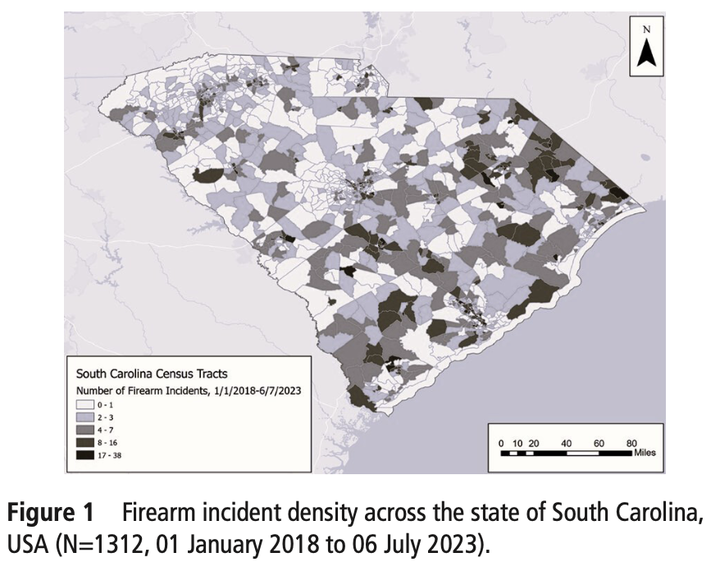Social determinants of health, driving time to trauma hospitals, racial composition, and firearm violence in South Carolina.

Abstract
Background- Neighbourhood-level social determinants of health (’SDOHs’) have been linked to negative health outcomes which may include elevated risk of firearm- related injury. This study investigates whether certain SDOHs, including average drive time to trauma hospitals, are associated with increased risk of firearm-related violence and death. Methods- We execute a cross-sectional examination of pooled firearm incidents (2018–2023) and the relationship of neighbourhood-level SDOHs across the state of South Carolina using negative binomial count regression models. Results- Findings indicate that neighbourhood disadvantage, residential mobility, per cent black, the percentage of older housing units, lack of technology access and lack of insurance access were all positively associated with an increased risk of firearm victimisation and death. The relationship between neighbourhoods with longer drive times of firearm incidents to trauma hospitals and firearm-related death was significantly moderated by the per cent black of residents within census tracts.Conclusions- Public health neighbourhood risk factors that are detrimental to individuals’ physical health are also associated with increased risk of firearm victimisation. Longer drive times from trauma hospitals increase the risk of death and this relationship disproportionately affects black Americans. The built environment of neighbourhoods and extended drive times to trauma centres ’doubly disadvantages’ historically disadvantaged populations.